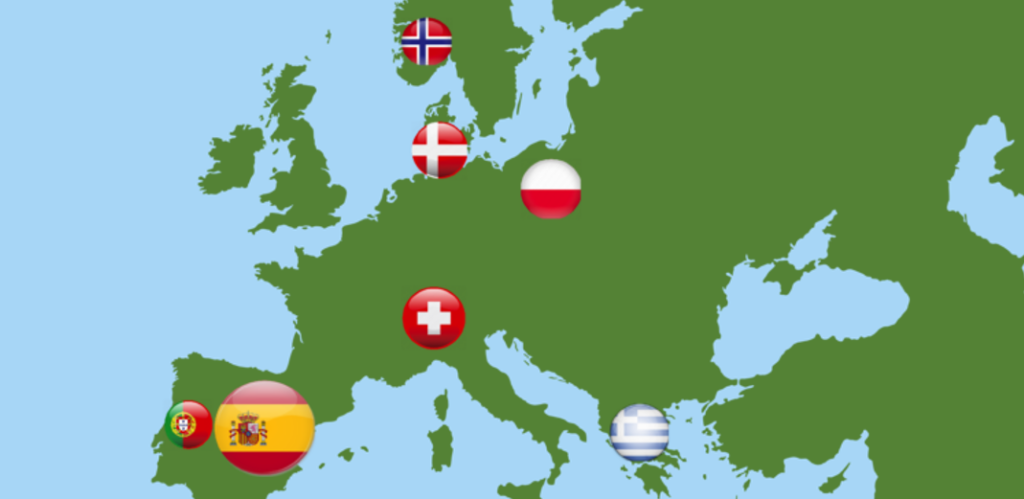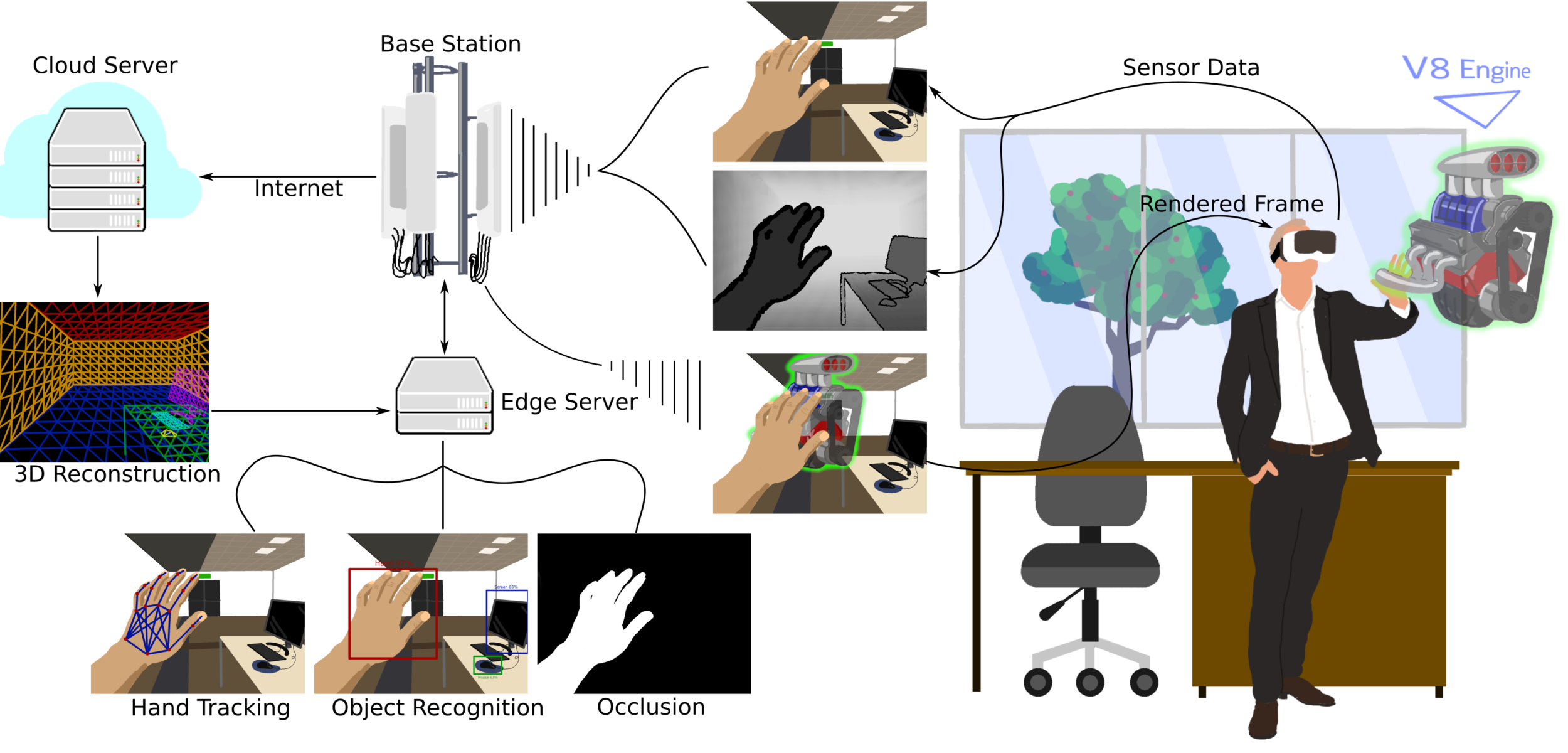Connected Home IoT Technolgies and the EU TeamUp5G Project
by David Alejandro Urquiza Villalonga and Manuel José López Morales, researchers at Universidad Carlos III de Madrid
Introduction:
The concept of the “connected home” has gained a lot of attention in the last decade as a means to improve various aspects of life. Entertainment, security, energy and appliance control, and electronic health monitoring are just a few representative applications. Recently, the Internet of Things (IoT) has become increasingly important due to the COVID19 pandemic. With most employees working from home, remote access tools are booming because they connect people with their machines and assets. They enable people to remotely communicate with machines and perform virtual inspections, remote diagnostics as well as remote support.
Therefore, the development of a dynamic IoT environment that adapts to each individual’s needs is essential to provide an optimal productivity scenario. In this article, we describe an intelligent platform which interconnects several sensors and actuators using an IoT approach to collect and process big volumes of data. The IoT system, combined with a powerful artificial intelligence (AI) tool, learns the user’s behavior and offers improved new services according to their preferences [1] [2].
In this context, applications related to home security, remote health monitoring, climate control and lighting, entertainment, smart sleep, and intelligent shopping have been developed.
Challenges in IoT development and deployment:
There are several challenges to support massive IoT deployments providing connectivity for both cellular and non-cellular devices. New technologies with higher energy and spectral efficiency are required to enable smart device-to-device (D2D) communications with reduced connectivity costs [3]. The technical requirements to fulfill include:
• The interconnection of several sensors in an intelligent management platform according to a massive machine-type-communications (mMTC) approach. In this sense, new spectrum access techniques and energy-efficient technologies to support the operation of a large number of devices are required.
• Enhanced mobile broadband (eMBB) communication to support video streaming for entertainment, remote working, and online teaching.
• Scalability: this will become an issue mainly in relations to generic consumers as the number of devices in operation rises.
• Dense and durable off-grid power sources: it would make a difference if power could be broadcasted wirelessly to smartphones and sensors from a distance.
Popular current smart home devices:
Some of the most popular smart home devices include the intelligent wireless speaker “Google Home” with a connected voice management system that interacts with the Google Assistant helping with music, calendar, news, traffic, etc. On the other hand, Amazon has developed its own intelligent devices, namely “Amazon Echo” (with Alexa) and “Amazon Echo Plus,” which includes a smart home Zigbee hub for easy setup and control of compatible smart home devices.
Far-field speech recognition is included in the “Amazon Echo Spot,” which is designed with a smart alarm clock that can make video calls with a tiny 2.5-inch screen, or become a nursery camera. LifeSmart provides smart home solutions focusing on security, energy-saving, and bringing convenience to life with a complex network of automatic intercommunication devices that simplifies daily routines [4].
Renesas offers a wide variety of IoT solutions for security, comfiness, health, connectivity and others, for different sectors such as automotive, healthcare, industrial, and home appliances [5].
Supporting technologies for massive IoT deployment:
Nevertheless, many products offered by companies still provide IoT solutions that can be thought as of being in an infancy state. The underlying communication technologies have to increase their capabilities in order to overcome the challenging needs and provide an improvement to IoT solutions.
Therefore, new wireless communication technologies [including 5G (IMT 2020), WiFi 6 (IEEE 802.11ax), Bluetooth 5, etc.] will be combined with classical short range wireless technologies [such as ZigBee, NFC and others] and installed in homes and small business offices. Low Power Wide Area Network (LPWAN) technologies from cellular carriers are LTE-Cat M1 , narrow band IoT (NB-IoT) and LoRa/LoRaWAN.
Several studies reveal that higher frequencies are expected to be able to operate as complementary bands for the deployment of 5G networks with higher capacity. It is expected that millimeter wave (mmWave) ultra-dense small-cells supported by massive multiple-input multiple-output (mMIMO) will be able to offer the capabilities to interconnect multiple devices and to provide high-speed services even in indoor scenarios. These small-cells may be interconnected with each other and with the core network by means of a fiber optic connection or with a mmWave backhaul.
Editor’s Note: Some wireless communications professionals believe that a 5G fixed wireless network, using massive multiple-input multiple-output (mMIMO) systems at millimeter wave (mmWave) frequencies, will be able to offer high throughput and low latency to support many WiFi connected home devices. Verizon’s 5G Home Internet is an example of this.
On the other hand, network densification is a promising technology to overcome many issues in mmWave systems such as blockage and short-range coverage that can significantly increase the capacity of the network. Therefore, Ultra-dense networks (UDN) compound by small cells (SCs) is also considered to have an important role in IoT connectivity.
In addition, a fundamental feature needed to support massive IoT is scalability on the device and the infrastructure sides which can be provided by 5G cellular networks. 5G systems will be able to offer connectivity to an extremely large number of low-cost, low-power, low-complexity devices, based on an evolution of the current LTE narrow band IoT (NB-IoT) [3].
New radio access technologies will also be required. For example, cognitive radio (CR) to allocate bandwidth dynamically and to handle high interference levels. In addition, the big data processing capabilities for the AI learning and prediction process is supported only by 5G networks.
TeamUp5G Project:
TeamUp5G [6] is a European Training Network (ETN) in the frame of the Marie Skłodowska-Curie Innovative Training Networks (MSCA ITN) of the European Commission’s Horizon 2020 framework. TeamUp5G’s EU funding adds up to 3.72 million Euros between 2019 and 2022.
TeamUp5G is currently working on the use cases, technical challenges, and solutions to facilitate the technical feasibility of ultra-dense small cell networks.
The research objectives of TeamUp5G are focused on solving three problems: (1) Interference Management, waveforms, and mMIMO, (2) Dynamic Spectrum Management and Optimisation, and (3) Energy Consumption Reduction. Among others, it can provide the technical solutions to make massive IoT Smart Home connectivity feasible. Some of their research results include [7] and [8].
Where in Europe is TeamUp5G:

What Is the TeamUp5G Project:

Image Credit: TeamUp5G Project
In reference [7], the authors study a cognitive radio system with energy harvesting capabilities (CR-EH) to improve the spectral and energy efficiency according to the green communication paradigm. A novel optimal sensing policy to maximize detection performance of available spectrum and to protect primary users from interference is developed. The proposed scheme is based on the efficient use of harvested energy to implement spectrum sensing operations. Offline and online scheduling policies are derived with an optimal formulation based on convex optimization theory and Dynamic Programming (DP) algorithm, respectively. In addition, two heuristic solutions with low complexity are also proposed to dynamically manage the use of spectrum with high levels of energy efficiency which is essential for IoT deployment.
In reference [8], the authors demonstrated how scenarios with stringent conditions such as high mobility, high frequency selective, low SNR and short-packet communications can benefit from the use of non-coherent mMIMO. Non-coherent mMIMO avoids the need of channel state information (CSI) to extract the benefits of mMIMO. This avoids the waste of resources due to the overhead created by the orthogonal signals, which is more severe in scenarios with stringent conditions. These types of scenarios are very common in Home IoT, since low battery powered devices will be the most common, such as a variety of domestic sensors and actuators. Furthermore, in short-packet communications, the use of CSI is proportionally greater due to shorter useful data as also happens in Home IoT, in which many devices send short bursts of data from time to time, thus benefiting from the use of non-coherent communications.
Thus, it has been shown that new interference management techniques, energy harvesting, and non-coherent communications can overcome some of the technical challenges inherent in IoT networks for Smart Home applications.
Conclusions:
In this article, we have covered some aspects considered in IoT Smart Home 5G. We have first made an introduction with the basics of the use of IoT in homes, aided by 5G technology and AI. Secondly, we have presented some already existing solutions from companies such as Google, Amazon, LifeSmart, and Renesas, which work over legacy networks and thus do not extract all the potential benefits of 5G IoT Smart Home. We have continued stating the main technical challenges in IoT deployment. We have defined some technologies that will support the use of IoT at homes, including massive multiple-input multiple-output, millimeter waves, ultra dense networks, small cells, and cognitive radio. We have talked about the TeamUp5G project which partly focuses on the research of new solutions that can make the massive deployment of IoT Smart Home feasible.
From the perspective of the authors, the following decade will see an increase in the appearance of products based on the referenced technologies, which will bring the concept of IoT Smart Home based on 5G closer to reality.
References:
[1] K. E. Skouby y P. Lynggaard, «Smart home and smart city solutions enabled by 5G, IoT, AAI and CoT services», en 2014 International Conference on Contemporary Computing and Informatics (IC3I), nov. 2014, pp. 874-878, doi: 10.1109/IC3I.2014.7019822.
[2] H. Uddin et al., «IoT for 5G/B5G Applications in Smart Homes, Smart Cities, Wearables and Connected Cars», en 2019 IEEE 24th International Workshop on Computer Aided Modeling and Design of Communication Links and Networks (CAMAD), sep. 2019, pp. 1-5, doi: 10.1109/CAMAD.2019.8858455.
[3] S. Ahmadi, 5G NR: Architecture, Technology, Implementation, and Operation of 3GPP New Radio Standards. Academic Press, 2019.
[4] https://iot.ilifesmart.com/
[5] https://www.renesas.com/us/en/solutions.html
[6] https://teamup5g.webs.tsc.uc3m.es/
[7] D. A. Urquiza-Villalonga, J. Torres-Gómez, y M. J. Fernández-Getino-García, «Optimal Sensing Policy for Energy Harvesting Cognitive Radio Systems», IEEE Transactions on Wireless Communications, vol. 19, n.o 6, pp. 3826-3838, jun. 2020, doi: 10.1109/TWC.2020.2978818.
[8] M. J. Lopez-Morales, K. Chen-Hu and A. Garcia-Armada, “Differential Data-Aided Channel Estimation for Up-Link Massive SIMO-OFDM,” in IEEE Open Journal of the Communications Society, vol. 1, pp. 976-989, 2020, doi: 10.1109/OJCOMS.2020.3008634.


